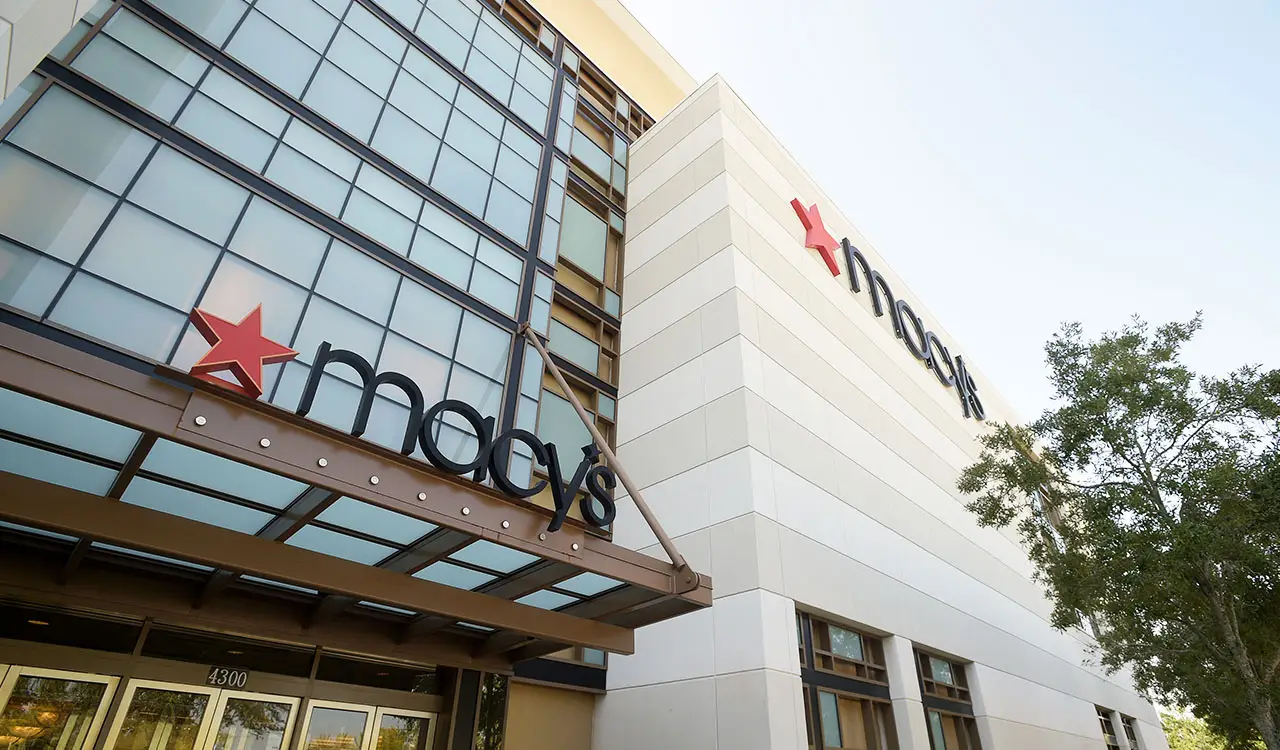Macy’s is undergoing a transformation under the new leadership of Chairman and CEO Tony Spring. Macy’s, Inc.’s new strategy aims to fundamentally reposition the company, enhance the customer experience, deliver growth and unlock shareholder value. The plans are big and bold, but one critical factor that is often overlooked in deference to success in a digital marketplace is culture. And more specifically, how a culture shift can enhance the customer experience – the final measure of success. Change management is a challenge as it relies on people, not strategy, to activate it and support it. We caught up with PJ Singh, vice president of stores strategy and product management at Macy’s, who spoke with TRR at The Lead Summit to explore how he and his team are working to fulfill a visionary transformation.
Culture change is something that a lot of companies don’t spend enough time talking about,” Singh says. “We’re quick to deliver and provide initiatives and strategies and investments but you have to get to the heart of the change that you’re trying to inspire.
Macy’s on the Move
Singh is an enthusiastic supporter of Macy’s new chapter. He explains, “I’m really excited to have Tony at the helm leading this transformative change that we call A Bold New Chapter. This is our business strategy, but more importantly, it is a framework to challenge the status quo, reposition our company for the future and deeply focus on how to unlock the customer experience to drive profitable growth and shareholder value.”
The greatest strategy in the world won’t work if management and the workforce aren’t behind it. That’s why Singh and the store’s leadership team are focusing their energy on intently listening to their customers and to their store associates (whom Macy’s refers to as colleagues) to ensure the priorities being set are being influenced by their feedback. “This is a business imperative,” Singh states in how to effectively shape the culture. “Ensuring their voices are heard and reserving a seat at the table for their perspective is making sure that all of our teams are a part of driving this strategy vs simply being on the receiving end of it.”
“We’re diving deeply into customer feedback. We’re challenging the things that we have done in the past that have become part of our business processes and standards while debating and rationalizing the ‘why.’ It’s led to how we are optimizing our footprint, how we can refocus our resources and how we can continue to strike the right balance between assortment variety and value,” Singh says. “It’s an exciting time in the organization and we are continuing to test and iterate this year.”
Macy’s is expanding the learnings from a 2023 pilot with a small number of incubator stores to 50 stores this year, which they call the “First 50.” The stores are representative of Macy’s go-forward geographic footprint and the focus on testing and iterating work, revealing great insights from a customer experience perspective.
Singh adds “In these 50 stores you’re going to see additional staffing and a heightened level of animation and eventing. We know how to put on a party, and we know how to parade. We’re working on how to bring those moments to life in a micro way to our stores. We’re inviting our customers to special events including product demonstrations, fashion shows and activities that bring retail theater back into the mix.”
Macy’s is also opening a number of small-format stores in high-traffic shopping centers. This small-format store strategy has been a subject of intense scrutiny and speculation among the media, TRR included. Singh is enthusiastic about the six that have opened this year with six more before year-end. “That’s 12 stores in a year with each opening informing the approach to the next.”
Managing Change
Singh is the first to admit that change management is not easy. As a specialist in strategy and launching new technology products, he is faced with change daily. He says, “We manage a lot of change. We’re bringing new technology into place right now. We’re modernizing our point of sale. We’re thinking about ways that we can engage with customers from a communications perspective.” He adds that you can’t underestimate how important change is strategically because if you miss how to enact change, your strategy will not work, technology won’t be adopted, and people will disengage.” He adds, “There’s no ROI in any innovation or change if it isn’t adopted.”
“If I told you that I’m going to tweak the way that you’ve been doing your job for the last 10 years that you have celebrated as a success, it’s going feel slightly uncomfortable, right? So, we have to make sure that any change management is well thought through in advance. You give it time to mature, not just for the masses in the aggregate, but for each individual who is going to adopt it in different ways. And then you find the advocates to create the culture change organically from the ground up,” Singh says.
The Human Factor
As Singh says, it’s the human factor that is the greatest strength or the weakest link in any culture shift. It takes looking at the entire business holistically, from an inside-out perspective to ensure that changes are actually being manifested. “I think culture change is something that a lot of companies don’t spend enough time talking about. You know, we’re quick to deliver and provide initiatives and strategies and investments but you have to get to the heart of the change that you’re trying to inspire. Take our 70,000 employees across our organization who are creating experiences for customers every single day. They are the ambassadors of our brand who are listening, learning and trying to make sure that you’ve got that amazing suit for your first job interview or the perfect dress that you want to wear to that dance, or even help inspire how to put it all together. Our colleagues are the ones who are there for you and in those moments, they listen to your experiences, and they share them with all of us.”
He says that inspiration for change often comes from within. “In a way, our workforce is the inspiration for a lot of meaningful culture change. You’re trying to make sure that we don’t lose sight of the fact that the culture, the inward expression of our culture, and the engagement that we have, is going to show up in the customer experience.” The stronger the engagement, the more positive the culture shift can be. Singh adds, “There’s a direct correlation between how engaged our employees are and the customer experience.” It takes candid and honest discussion at every level of the organization to effect change. “So, when we’re in stores, we’re not there to inspect what’s happening; we’re leaning into learning from our colleagues, how they built brand new practices or figured out how to optimize the resources they have. We’re listening, we’re learning and we’re asking people questions.”
Mindset Shift
Mindsets can be tricky. Let’s face it, everyone’s got one. Under Spring’s leadership, more people are sitting at the table. Singh explains, “I love the candid feedback that we’re getting, and it is making such a difference in the way we think about every decision that we make. The breakdown of silos that we have in the organization is so exciting because when we work better together it leads directly to palpable change and a better customer experience. I’m super excited about it and it’s really being driven by our colleagues at the forefront.”
So, shifting a mindset becomes possible on a one-on-one basis. Critical thinking is a tool for uncovering how to change. Singh explains change management is asking, “Why do we do the processes we do? We’ve done it for a long time, it’s just become a rinse and repeat. But now, we need to know why we’re doing the stuff we do. We’re asking ourselves if what we are doing is adding value.” That’s the grassroots strategy for designing a better experience. He adds, “We think about challenging the status quo. It’s taking a moment to pause and listen to the voice of the people who are actually doing the work as an investment in driving cultural change.
“Every Monday we have a roundtable with the 50 store managers leading our First 50 stores. This is a direct line of communication with our chief stores officer and an open forum to ask what we collectively have gotten right, where we need continued support and iteration, and what best practices we can incorporate into our playbook. So, they’re co-authoring the future.” He explains that recognition is key to sustainable support of any transformation, “We have rallies in our stores every day. And in the rally, we share moments of recognition and celebration of the targets and KPIs that are achieved by our teams. This inspires a tremendous amount of pride in the experiences we create and recognition for the results and moments that matter.
“We host “Ask Me Anything” sessions with our colleagues that create an open dialogue and invite candid discussions. This approach is slowly starting to change the mindset and make our colleagues feel more comfortable in sharing their insights with us,” he adds.
“Earlier this year, we hosted our store managers for a two-day leadership meeting in Chicago. The entire agenda was focused on our frontline teams and centered on the idea that engaged colleagues, driven by a strong sense of pride in the Macy’s brand and equipped with the right know-how, support and resources can create great customer experiences and drive sustainable, profitable growth. That’s how we are working on delivering the experience from inside-out and bolstering A Bold New Chapter,” Singh concludes.




